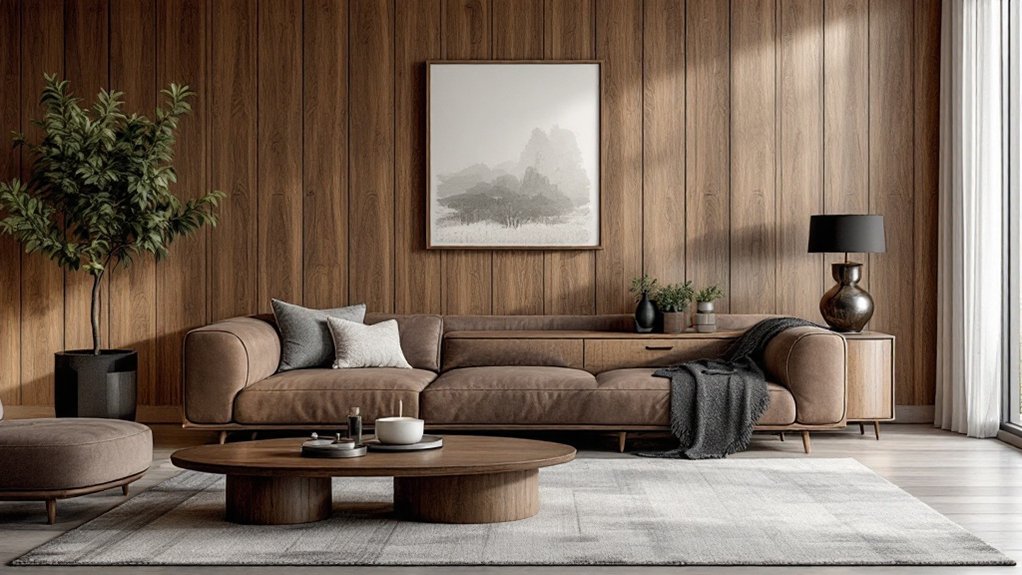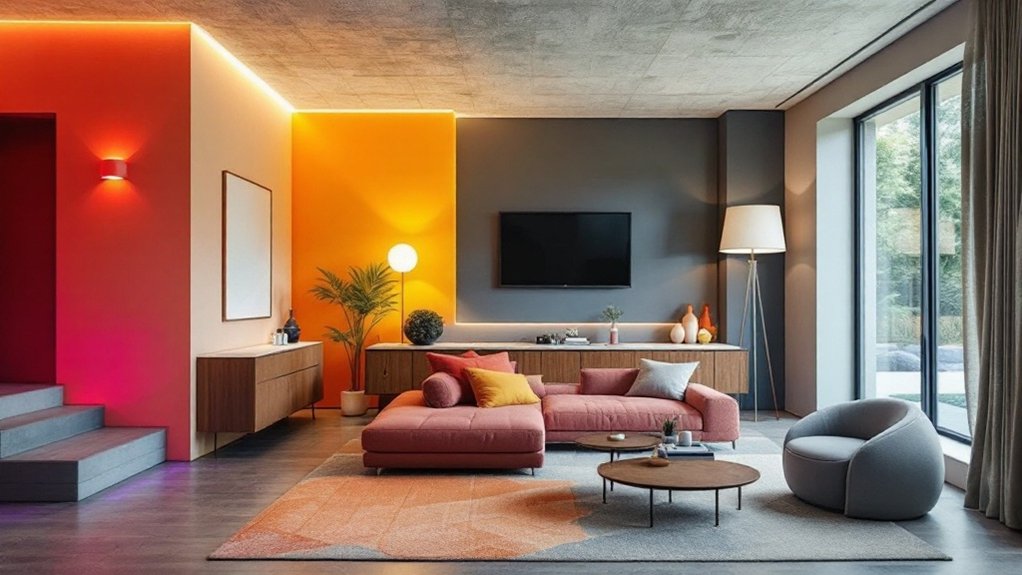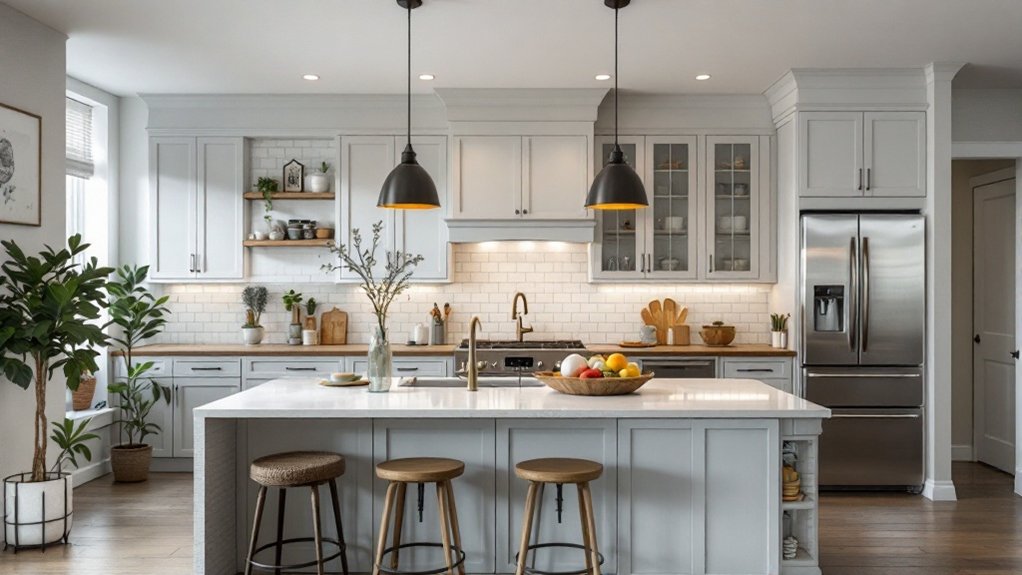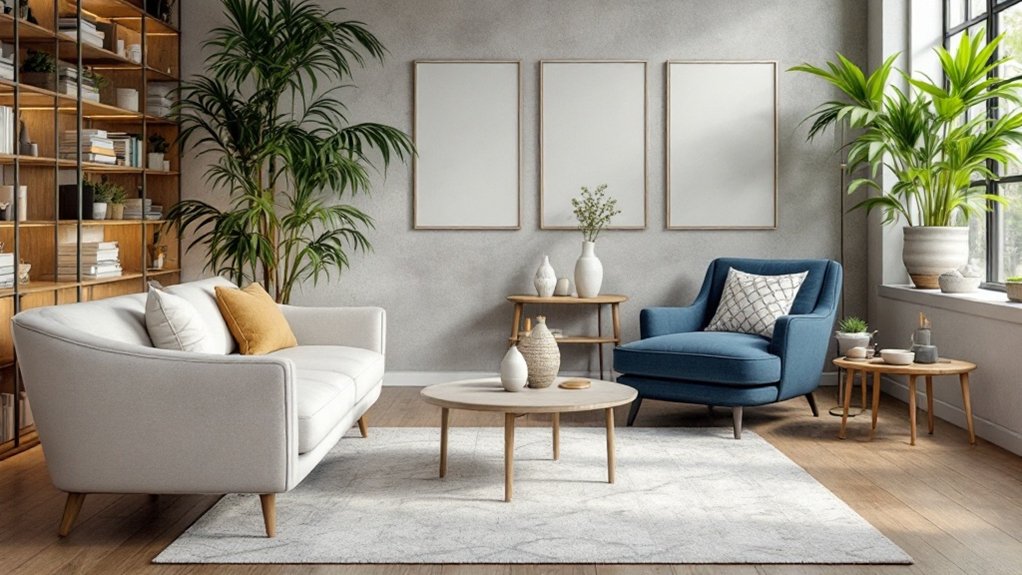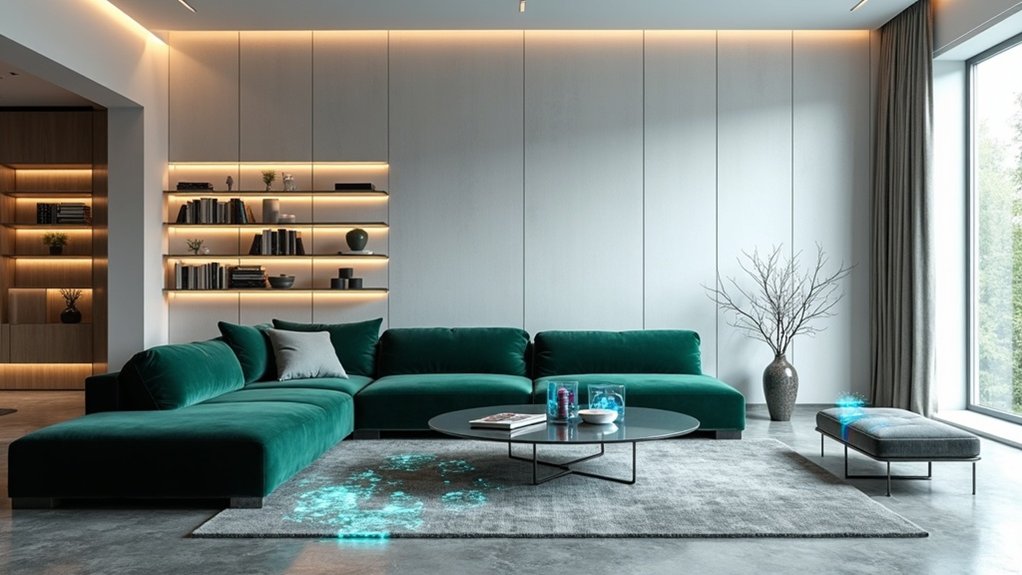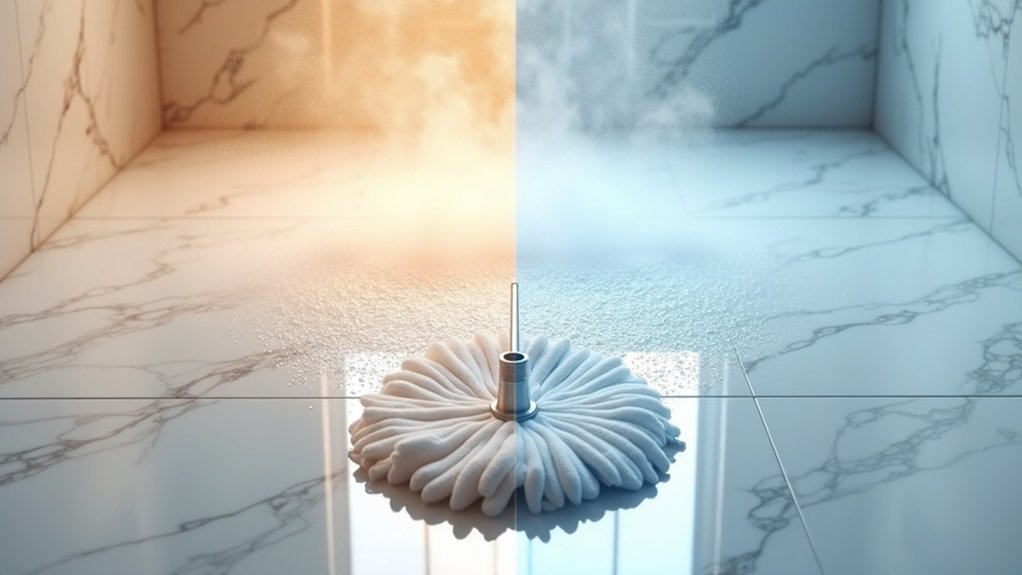Dark wood accents have made a sophisticated return to interior design, offering warmth and elegance across various styles. The key to successful integration lies in achieving proper balance through light walls, strategic lighting, and thoughtful contrast. Designers recommend incorporating dark woods like mahogany and walnut through statement pieces such as herringbone flooring, cabinets, or furniture. When paired with plush fabrics and metallic accents, these timeless elements create layered, inviting spaces that blend contemporary appeal with enduring craftsmanship. The artful combination of these elements opens a world of design possibilities.
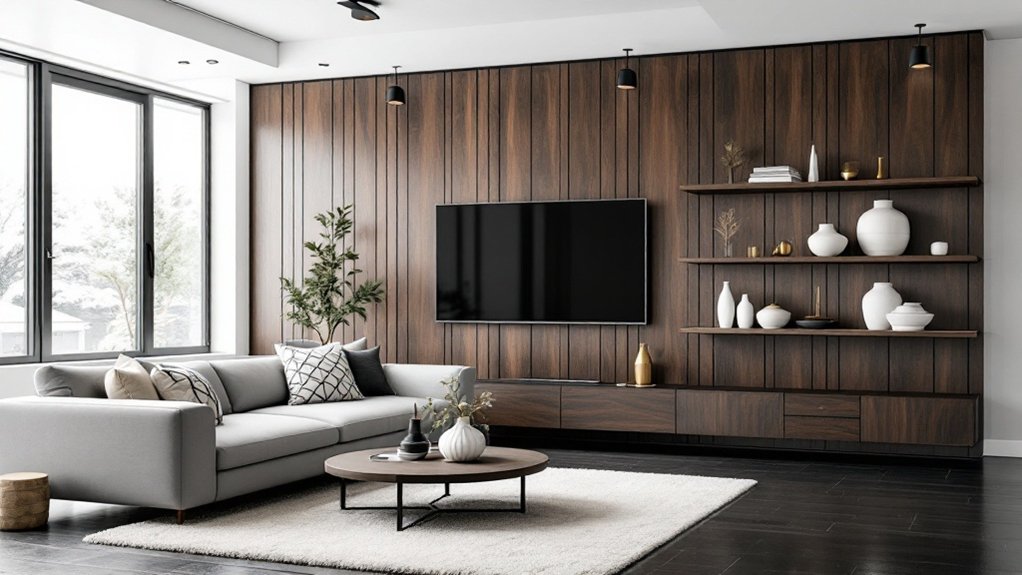
The timeless allure of dark wood accents transforms ordinary spaces into sophisticated sanctuaries, offering a perfect balance of warmth and elegance in interior design. Interior designers have witnessed a significant resurgence in the use of rich, dark wood elements, from mahogany furnishings to walnut wall panels, as homeowners seek to create more inviting and luxurious environments. Popular designs now incorporate herringbone patterns in flooring to add visual interest and timeless appeal.
The key to successfully incorporating dark wood lies in achieving proper balance through thoughtful contrast and lighting. "Dark wood pieces demand careful consideration of their surroundings," notes design expert Sarah Chen. "Pairing them with lighter walls, adequate natural light, and strategic artificial lighting prevents spaces from feeling heavy or oppressive." This approach allows the natural beauty and depth of materials like walnut and oak to shine while maintaining an airy, welcoming atmosphere. The trend has especially gained momentum in kitchens, where dark wood cabinets are replacing the stark, clinical look of all-white spaces.
Contemporary designers are finding innovative ways to blend dark wood elements across various design styles. In modern settings, sleek dark wood furniture provides sophisticated focal points, while in traditional homes, these accents improve period authenticity. The versatility of dark wood extends to minimalist spaces, where a single statement piece, such as a dramatic bookshelf or dining table, can anchor the entire room without overwhelming it.
Texture plays a significant role in elevating dark wood installations. Combining these elements with plush fabrics like velvet and wool, or introducing metallic accents and natural materials, creates layered, multidimensional spaces. The addition of plants and greenery further softens the visual weight of dark wood while introducing organic elements that complement its natural essence.
Sustainability has become increasingly important in the selection of dark wood materials. Designers recommend choosing certified sustainable sources and considering both environmental impact and longevity when selecting pieces.
"Today's dark wood furniture isn't just about aesthetics," explains furniture maker James Norton. "It's about creating lasting pieces that will maintain their beauty for generations while respecting our environmental responsibilities." This combination of durability, sophistication, and conscious sourcing makes dark wood accents a compelling choice for contemporary interiors.
Frequently Asked Questions
How Do I Match Dark Wood Accents With Existing Light Wood Furniture?
Matching dark wood accents with light wood furniture requires strategic balance and coordination.
Interior designers recommend following the rule of thirds—keeping dark wood pieces to approximately one-third of the total wood elements.
Focus on complementary undertones, maintain consistent finishes across pieces, and incorporate bridging elements like neutral-toned rugs or metallic accessories.
For ideal visual harmony, distribute dark accents evenly throughout the space while using textiles and greenery to soften transitions between tones.
What's the Best Finish to Protect Dark Wood From Fading Over Time?
A polyurethane varnish with UV inhibitors offers the most extensive protection against fading for dark wood surfaces.
While both water-based and oil-based formulations provide excellent coverage, products specifically designed with UV protection help maintain the wood's rich coloring over time.
For best results, applying 2-3 thin coats and allowing proper drying time between applications guarantees maximum protection, while regular maintenance with specialized wood restorers can help preserve the original patina.
Are Dark Wood Accents Suitable for Small Spaces?
Dark wood accents can be highly effective in small spaces when used strategically.
Interior design experts note that deep tones can actually create an illusion of depth, making rooms feel larger by blurring wall boundaries.
The key lies in balanced implementation: using dark wood as focal points, pairing it with lighter elements, and ensuring proper lighting.
When complemented by reflective surfaces and thoughtful placement, dark wood elements add sophistication without overwhelming compact areas.
How Can I Prevent Dark Wood From Making My Room Feel Dated?
To prevent dark wood from appearing dated, strategic modernization is vital.
Pairing dark wood with contemporary elements like glass or metal accents creates a fresh aesthetic, while clean-lined furniture avoids the heaviness of traditional carved pieces.
Light-colored walls and textiles provide important contrast, and incorporating trendy accent colors through artwork or accessories instantly updates the space.
Proper lighting, whether natural or artificial, maintains a bright, current atmosphere.
Which Types of Dark Wood Are Most Resistant to Scratches and Wear?
Among dark wood species, Ipe (Brazilian Walnut) stands as the most scratch-resistant option with its exceptional Janka hardness rating of 3,680 lbf and naturally protective oils.
Mahogany and Teak follow, offering strong resistance through their dense grain structures and high oil content.
While White Oak provides good durability, it's significantly less resistant than Ipe.
These harder species maintain their appearance longer under heavy use, making them ideal for high-traffic areas and furniture.
